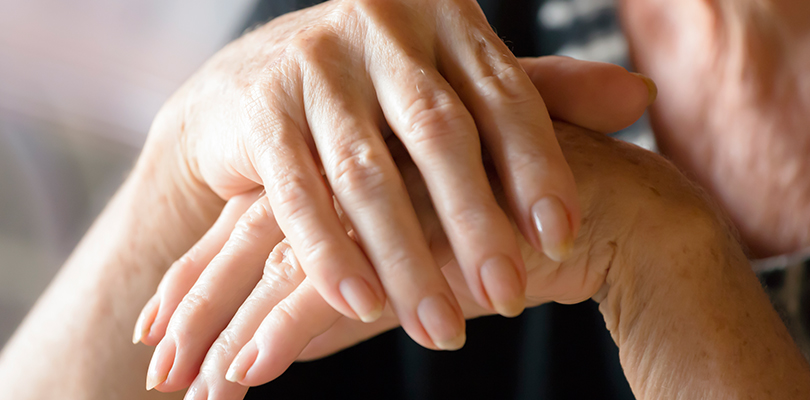Are Arthritis and Chest Pain Normal?
Chest pain associated with arthritis can be scary, but it is rarely an indication of something serious.
It is possible chest pain could indicate a heart problem, so it is a good idea to get it checked out, especially if it is a new symptom. Nonetheless, many different conditions cause chest pain, including some arthritis conditions.
What Causes Chest Wall Pain?
Chest pain associated with arthritis and musculoskeletal conditions can mimic a heart attack or other heart problem.
Research reported in the German medical journal, Der Internist, finds as many as 50 percents of chest pains are related to musculoskeletal conditions. Musculoskeletal conditions, (i.e., arthritis or fibromyalgia) are conditions that affect your joints, bones, and muscles.
Chest pain associated with arthritis affects the muscles and bones of the chest wall (your ribcage). For that reason, it is often called chest wall pain.
In general practice settings, the prevalence of non-cardiac chest wall pain in people with musculoskeletal conditions is 47 percent, this according to one 2015 report in the Australian Family Physician journal. And up to seven percent of patients have been diagnosed with chest wall pain in the emergency room.
Most reasons for chest wall pain are harmless and limited. Occasionally, however, chest wall pain may signal a more prominent problem requiring treatment.
Arthritis and Costochondritis
Costochondritis is one common cause of chest pain in people with arthritis conditions, including osteoarthritis (OA), rheumatoid arthritis (RA), psoriatic arthritis and ankylosing spondylitis (AS). Costochondritis causes inflammation in the tissues connecting the ribs to the breastbone.
The breastbone (also called the sternum) is the long flat necktie-looking bone located in the center of your chest. It connects to your rib cage, forming the front of the rib cage, and helps to protect your heart and lungs from injuries.
Costochondritis can sometimes feel like a heart attack, which is the reason many people became alarmed and head to an emergency room.
But costochondritis pain is often localized to one area, usually the left side of the breastbone. It is likely left-sided costochondritis is more commonly diagnosed because people are simply more likely to seek medical help because they are worried about a heart problem.
Interestingly, costochondritis is a very limited condition, and pain relief can be achieved with heat therapy and stretching. If you have chest pain that lasts more than one week, you should follow-up with your rheumatologist or other treating physician.
Arthritis and Chest Pain Symptoms
Arthritis chest pain has usually associated some exacerbation, such as minor trauma or upper respiratory infection, or it may be related to inflammation from the underlying arthritis condition.
The pain is either dull or sharp but usually located towards the front of the chest wall. Sometimes, pain radiates to the back or abdomen. Pain can also be felt when coughing, sneezing and taking deep breathes.
Tenderness and pain are worsened when you press on the rib joints or the breastbone. Tenderness in the breastbone or rib cage is a usually a telltale sign of costochondritis and makes it easier to diagnose this condition.
Rheumatoid arthritis is a painful autoimmune disease that targets the joints. There are different types of rheumatoid arthritis. Learn more here.
You will need immediate medical attention if you experience any of the following symptoms:
- High fever, sweating, or chills
- Breathing problems
- Signs of infection, including pus, swelling, and redness in the chest wall and rib joints
- Worsening pain despite taking medication
- Nausea
Diagnosing and Treating Arthritic Chest Pain
Your doctor will likely give you an electrocardiogram to rule out a heart attack. He or she may also request a chest x-ray and perform bloodwork.
A diagnosis of costochondritis doesn’t mean your doctor will have a treatment that will rid you of the pain. Chances are, you will be in pain for days or weeks, and the pain may return.
Costochondritis is harmless and goes away without any treatment.
- To help bring down pain, tenderness, and swelling, try hot and cold compresses, using heating pads and ice packs, and alternating between hot and cold.
- Over-the-counter anti-inflammatories, such as ibuprofen and naproxen may also help bring down inflammation and manage pain. If your arthritic chest pain isn’t responding to treatments, your doctor can prescribe a stronger anti-inflammatory, such as Voltaren (Diclofenac Sodium), or give you a cortisone shot into your inflamed rib joints.
- You should also get plenty of rest and avoid any heavy lifting. Any exacerbations can worsen chest inflammation and pain.
- In rare cases, when chest wall pain is severe, your doctor may send you to a pain specialist who performs nerve blocks. This would involve an injection to block nerves causing the pain and inflammation.
- Pain relief from nerve blocks can last months. If pain continues, a series of nerve block injections can eventually destroy the nerve causing pain and give you permanent relief.
The Takeaway
Arthritis chest pain is usually the result of inflammation of the chest wall, often originating from the rib page. Most people will recover fully from this condition without treatment.
But because a variety of health conditions can cause chest pain, you should see your doctor if you have never experienced this type of pain before. You should call 911 or get to your local emergency room if you are experiencing chest pressure that includes neck, jaw, shoulder or arm pain.
Any chest wall pain lasting more than three months and that is significantly affecting your quality of life should be brought to the attention of a pain specialist, who can determine the cause and discuss treatment options. Check with your treating doctor, insurance company or local hospital website to find a pain specialist in your area.







